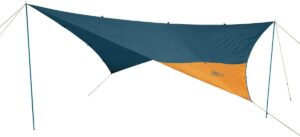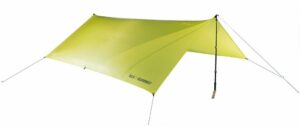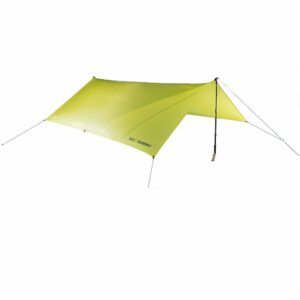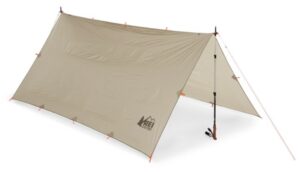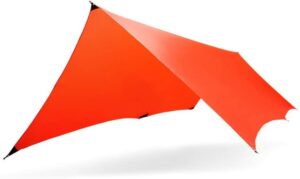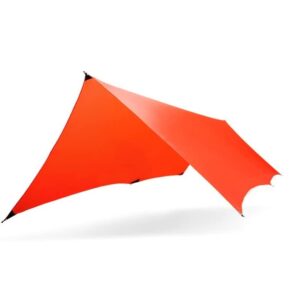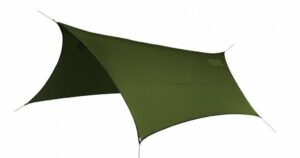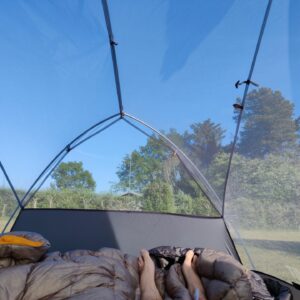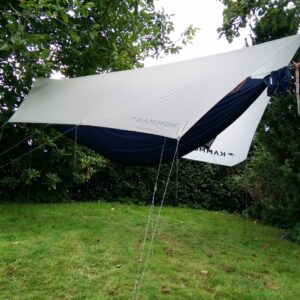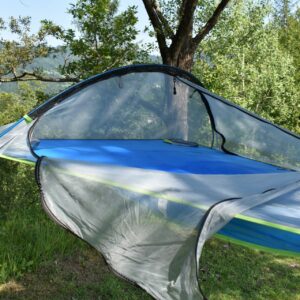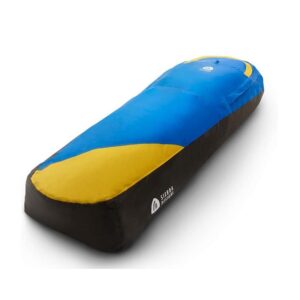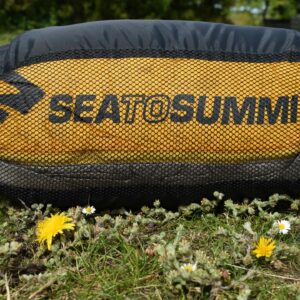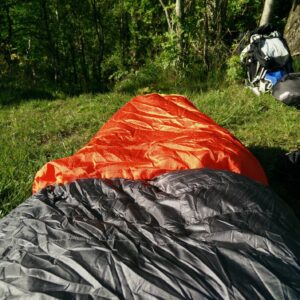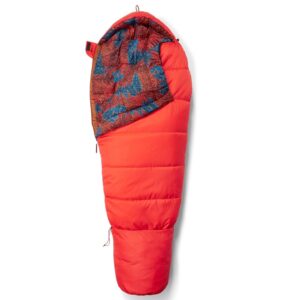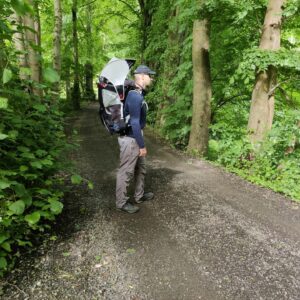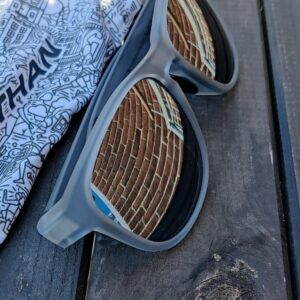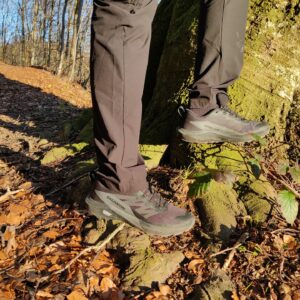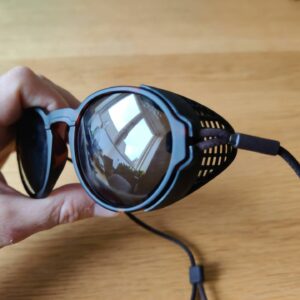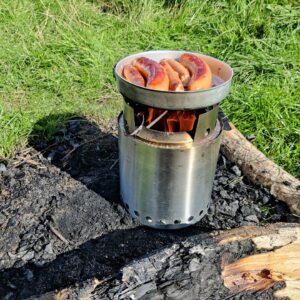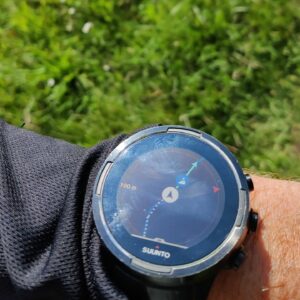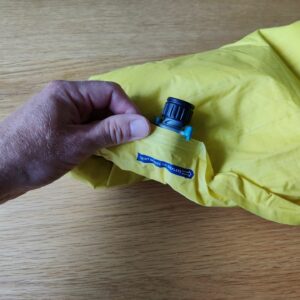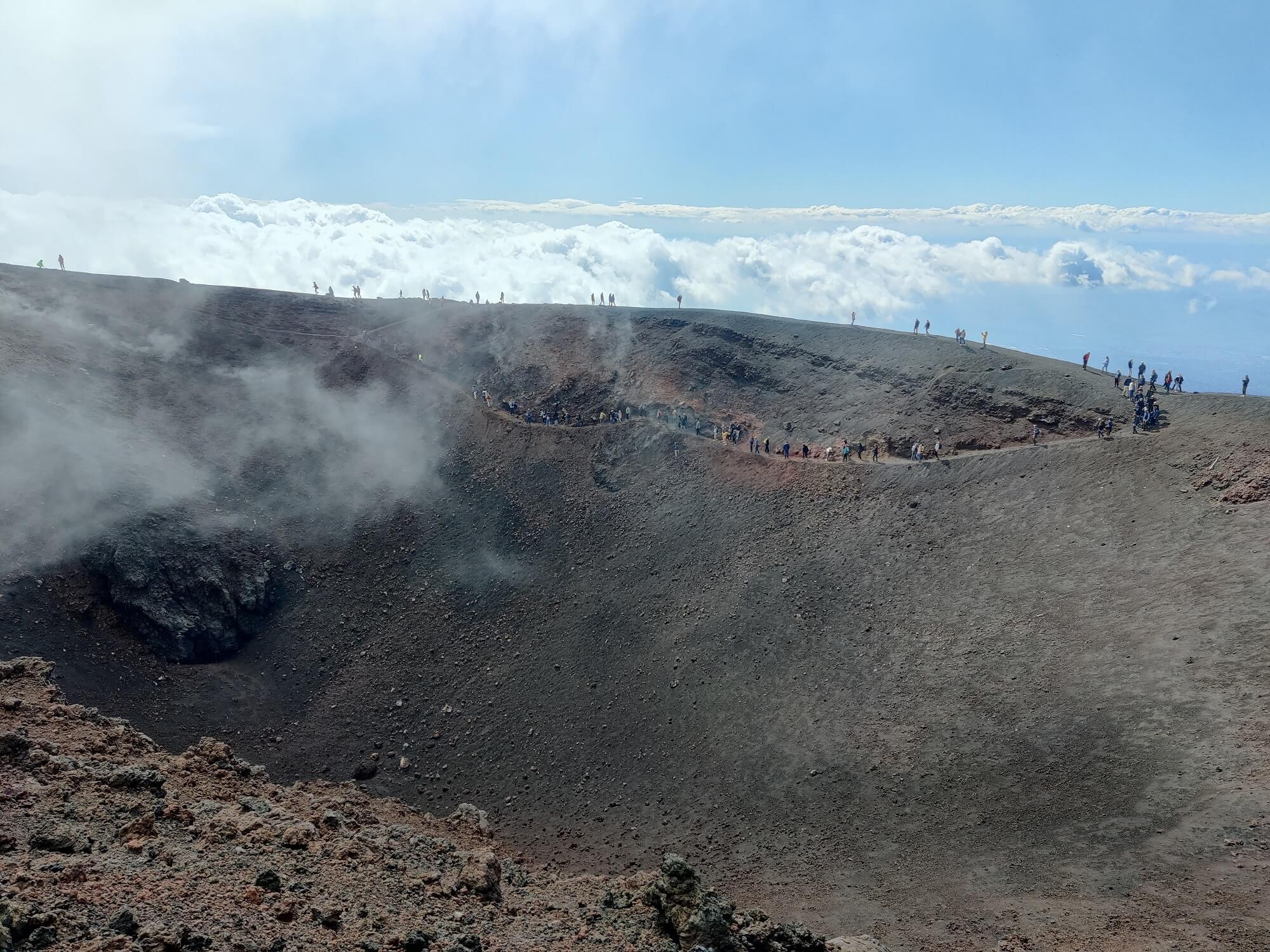A tarp is basically a sheet of waterproof fabric which can be attached with guylines to trees, trekking poles, rocks and other stabile things to form a shelter. Tarps are by far the lightest portable shelters; a high-quality tarp which accommodates two persons can weigh as little as 10 ounces (300 grams). Different modular components are available for tarp shelters such as inner bug nets, groundsheets, bivy sacks and hammocks. A bug net, for example, comes in handy in warm weather to prevent the mosquitoes from entering the shelter while a bivy sack will protect you against horizontally blowing precipitation.
You might think that it is much simpler to just bring a tent but using a tarp with modular components allows you to pack according to the expected conditions on the trail. Therefore, you can reduce the weight of your backpack significantly by leaving unnecessary things at home. Tarps are also inexpensive and very versatile. However, some skills are required to properly pitch the tarp, which is why tarps are not recommended for those who are new to camping out in the wild. How to set up and secure the tarp depends on the terrain, but in general woods are the best place to set up a tarp shelter because trees can be used to suspend and secure it.
A tarp should also be pitched according to the weather; for example, in stormy conditions a tarp should be pitched closer to the ground for better protection against rain and wind while in warm weather it can be pitched higher for better ventilation. To efficiently use a tarp as a shelter you should also know some basic knots.
In this review we selected and reviewed the best backpacking tarps. We only listed lightweight backpacking tarps that provide great durability and protection against the elements.
Updated Content
We regularly update our reviews and selections to always recommend you the best products on the market.
Expert Selections
We only list top-tier products. Read how our selections of best hiking products differ from others here.
Links
We use affiliate links and may receive a small commission on purchases at no extra cost to you.
1. The Best Backpacking Tarps Review
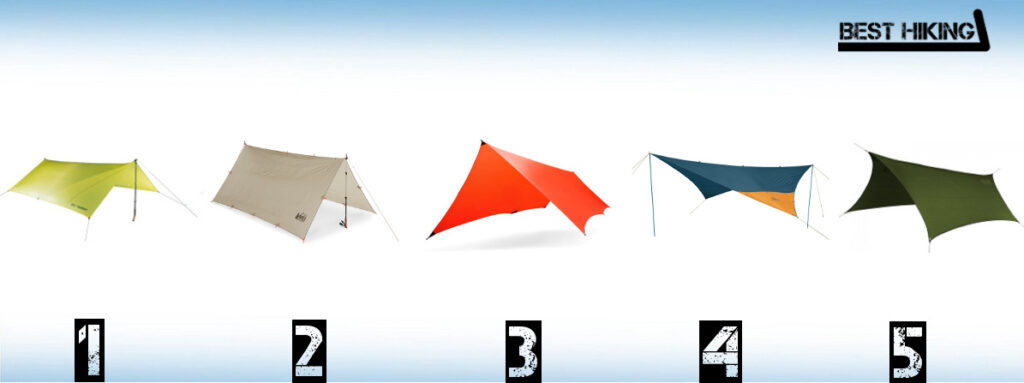
The Best Lightweight Tarps for Backpacking
- Sea to Summit Escapist Tarp
- REI Co-op Quarter Dome SL Tarp
- Kammok Kuhli Tarp
- Kelty Noah’s Tarp 9
- Eagles Nest Outfitters ProFly Rain Tarp
2. Comparison of Tarps for Backpacking
| Feature/Product | Sea to Summit Escapist Tarp | REI Co-op Quarter Dome SL Tarp | Kammok Kuhli Tarp | Kelty Noah’s Tarp 9 | Eagles Nest Outfitters ProFly Rain Tarp |
|---|---|---|---|---|---|
| Material | 15D Nylon | Nylon | 15D Ripstop Nylon | 68D Polyester | 70D Ripstop Nylon |
| Weight | 11 oz. (M) 16 oz. (L) | 1 lb. 2 oz. | 16.5 oz. | 1 lb. 13 oz. | 22 oz. |
| Weight (Metric) | 300 g (M) 440 g (L) | 510 g | 453 g | 822 g | 640 g |
| Size (Length/ Width) | 102 x 102 in. (M); 120 x 120 in. (L) | 115 x 115 in. | 144 x 108 in. | 108 x 108 in. | 126 x 75 in. |
| Size - Metric (Length/ Width) | 260 x 260 cm (M); 305 x 305 cm (L) | 292 x 292 cm | 365 x 274 cm | 274 x 274 cm | 320 x 190 cm |
| Packed Size | 7.5 x 3.0 in. (M); 9.1 x 3.0 in. (L) | 9 x 4.5 in. | 8 x 3.4 in. | 10 x 3 in. | 9 x 4.5 in. |
| Packed Size (Metric) | 19 x 7.6 cm (M); 23 x 7.6 cm (L) | 23 x 11 cm | 20 x 11 cm | 25 x 8 cm | 23 x 11.5 cm |
| Modular Components from Manufacturer | Escapist Groundsheed, Bug Tent, Bug Net | / | / | / | ENO hammock |
| Season | 4 (if used with appropriate components) | 3 | 4 (if used with appropriate components) | 3 | 4 (if used with appropriate components) |
| Trekking Poles Compatible | Yes | Yes | No | Yes | No |
3. The Selection
1. Sea to Summit Escapist Tarp
Suitable for:
- Hiking
- Mountaineering
- Backpacking
- Emergency shelter
The Sea to Summit Escapist backpacking tarp is due to its low weight very popular among backpackers. It is the smallest (packed size) and lightest (per m2) product in this review. The tarp is made of 15-denier polyurethane-coated and silicone-impregnated nylon. Therefore, it provides good protection against wind and rain. The material is rather thin but as it features reinforced corners (210D nylon) it provides good durability. The Sea to Summit tarp has eight attachment points (with cord adjusters); the two in the middle can also hold the tip of a trekking pole. Due to the many attachment points, you have multiple options when it comes to pitching the tarp. The Sea to Summit Escapist tarp is available in two different sizes; M which measures 260 x 260 cm and L which measures 305 x 305 cm. Both sizes are designed to accommodate two persons but the largest one offers more space for the gear. Sea to Summit also offers modular components for this tarp, such as the Escapist Groundsheet, Inner Bug Tent and Bug Net. All modular components work best with the Escapist tarp in size L.
Pros:
- Weight
- Packed size
- Attachment points
- Trekking pole compatible attachment points
- Modular components
Cons:
- /
Video

2. REI Co-op Quarter Dome SL Tarp
Suitable for:
- Hiking
- Mountaineering
- Backpacking
- Emergency shelter
The REI Co-op Quarter Dome SL is another very popular backpacking tarp. In comparison to the Sea to Summit tarp it is slightly heavier per m2 but on the other hand it is also made of a sturdier and more durable material. The REI tarp has many attachment points and comes with six quick-attach guylines with tighteners. The two attachment points in the middle can also hold the tip of a trekking pole. This makes the tarp easier to pitch. The REI Co-op Quarter Dome SL measures 292 x 292 cm and is thus sized somewhere in-between size M and L of the Sea to Summit Escapist tarp. The tarp has also reinforcements in corner grommets for a strong and stable pitch and the guylines are reflective for nighttime visibility. It accommodates up to two persons.
Pros:
- Weight
- Trekking pole compatible attachment points
- Many attachment points
- Reflective guylines
Cons:
- /
3. Kammok Kuhli
Suitable for:
- Hiking
- Mountaineering
- Backpacking
- Emergency shelter
The Kammok Kuhli tarp is by far the largest tarp in this review. It measures 108 inches in width and 144 inches in length. Therefore, it comfortably accommodates two to three persons. Another great thing about the Kuhli Tarp is its knotless design. Pitching the tarp doesn’t require knot tying skills. The tarp comes with eight guylines, two ridge line cords, four stakes and a stuff sack. It is made of 15-denier ripstop nylon which is silicone impregnated and polyurethane coated. Furthermore, the fabric is also treated with DWR. The tarp therefore provides great protection against the rain. The only downside of the tarp is that it’s slightly heavier than competitive products. Nevertheless, Kammok also offers the ultra-light version (Kuhli UL) which weighs merely 10 ounces but is slightly narrower and shorter.
Pros:
- Knotless design
- Durability
- Size
Cons:
- Weight
Video

4. Kelty Noah’s Tarp 9
Suitable for:
- Hiking
- Mountaineering
- Backpacking
- Emergency shelter
The Kelty Noah’s is an inexpensive backpacking tarp which offers a lot for the price. The tarp is made of durable 68-denier polyester which provides great protection against the elements. However, because the fabric is very robust, the Kelty Noah’s tarp is also heavier than the tarps listed above – it weighs no less than 2 pounds. The tarp has multiple attachment points and comes with stakes and adjustable guylines for easy pitching. The Kelty Noah’s Tarp is best for 2 persons. However, Kelty offers this tarp also in 144 x 144 in. version (Noah’s Tarp 12) and 192 x 192 in. version (Noah’s Tarp 16). These two versions are larger and accommodate more people.
Pros:
- Price
- Easy to set up
- Durable fabric
Cons:
- Weight
5. Eagles Nest Outfitters ProFly Rain Tarp
Suitable for:
- Hiking
- Mountaineering
- Backpacking
- Emergency shelter
The Eagles Nest Outfitters ProFly is a budget backpacking tarp. This tarp is primarily intended for the ENO hammock, but you can also use it as a substitute for a tent. That is, as long as you have trees around your camping place as the Eagles Nest tarp cannot be suspended with trekking poles. The tarp is made of polyurethane coated 70-denier ripstop nylon and thus offers great weather protection. The Eagles Nest Outfitters ProFly tarp is equipped with six attachment points which allow you to easily secure the tarp.
Pros:
- Price
- Compatible with ENO hammock
Cons:
- Attachment points not compatible with trekking poles
Where to buy?
Also available at:
Video

4. Backpacking Tarp Buying Advice – What is important?
Weight:
Backpackers use tarps instead of tents to pack their backpacks lighter. Therefore, a backpacking tarp should be significantly lighter than a tent. High-quality backpacking tarps that can accommodate two persons weigh as little as 10 ounces while high-quality two-person backpacking tents weigh in average around 3 pounds. Read more about why it is important to use lightweight gear for backpacking in our article Why hike lightweight.
Packed Size:
Backpacking tarps in general take up very little space in a backpack – less than bivy sacks or tents. In this selection we only listed backpacking tarps that pack very small.
Unfolded Size:
The bigger the tarp, the larger area it will cover and shield from rain and wind. You can also increase the covered area by decreasing the internal height (A pitch). However, if you decrease the internal height too much you will have problems using modular components such as an inner bug net or a bivy sack.
Material:
Backpacking tarps are usually made of nylon – the same material as the canopies of tents are made of. The nylon fabric is typically impregnated with silicone or coated with polyurethane to provide good protection against the elements. Many manufacturers also use ripstop technology (e.g. the fabric is reinforced with interwoven threads) to increase the abrasion resistance.
The fabric of a tarp is not breathable, but you seldom have condensation issues with a tarp shelter as the very setup is well-ventilated. However, you should make sure that no part of your sleeping bag is in direct contact with the tarp as the heat from the sleeping bag can cause condensation to form on the tarp, thus making the sleeping bag moist/wet.
Attachment Points:
Backpacking tarps have six attachment points or more, depending on the tarp’s size and design. There is usually one attachment point close to the each of the four corners while two additional attachment points are located on the sides in the middle. The attachment points in the middle allow you to suspend the tarp. These two attachment points can usually hold the tip of a trekking pole or a stick, so that you can easily suspend the tarp even if there are no trees around. Another four attachment points (stake loops) are used to fasten the tarp to the ground with stakes.
5. Questions and Answers
What is the best tarp material?
The best material for tarps is nylon because it is lightweight, very sturdy and abrasion-resistant. However, as nylon is not waterproof it must be impregnated with silicone or coated with polyurethane. Nylon fabrics differ in denier value – the higher is the denier value, the sturdier and heavier is the fabric.
Are all tarps waterproof?
No, all tarps are not waterproof. Waterproof tarps are made of nylon that is impregnated with silicone or coated with polyurethane.
